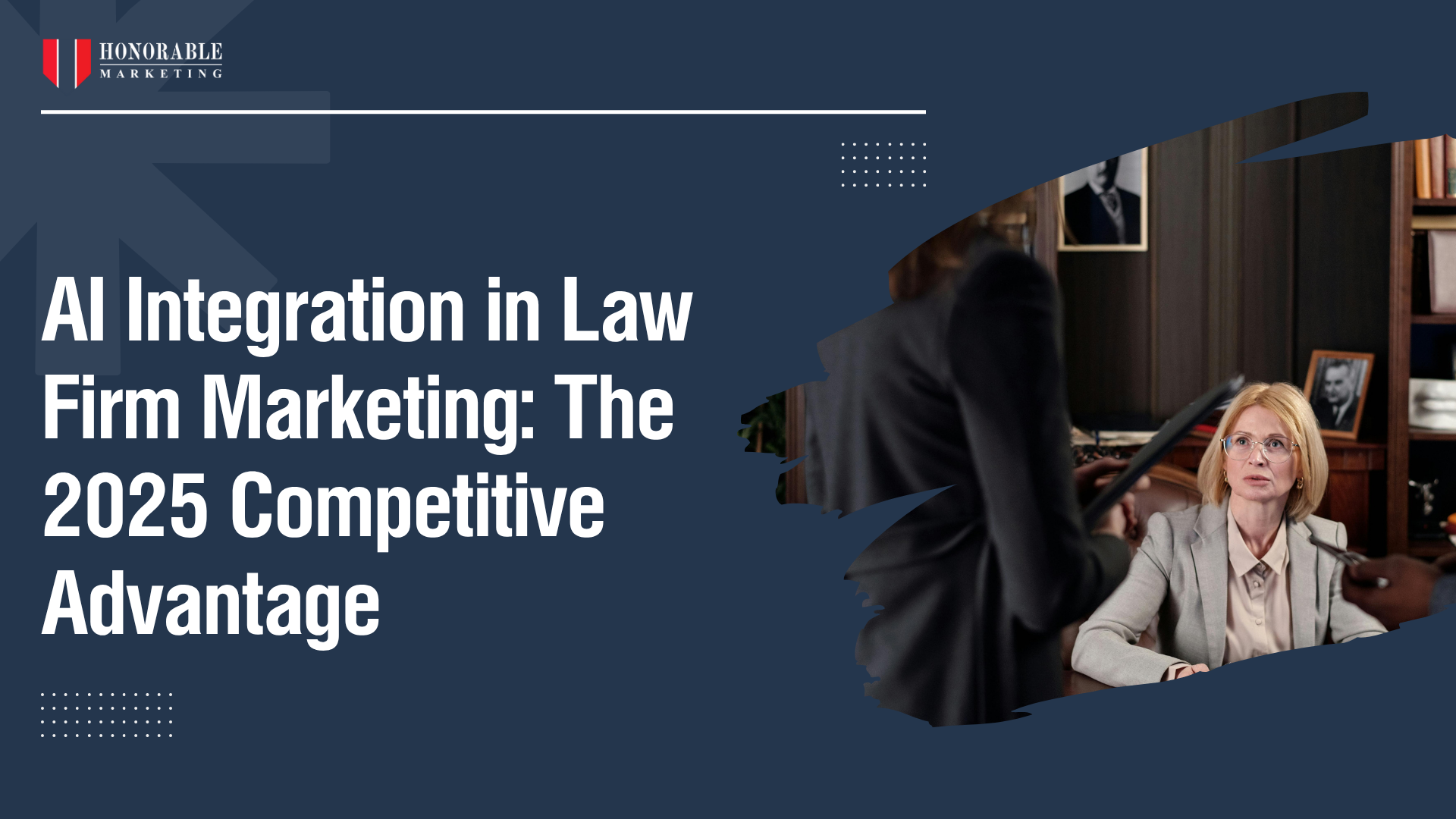August 13, 2025

The legal industry is standing at a crossroads in 2025. For decades, law firms have relied on referrals, reputation, and word-of-mouth to bring in clients. Those strategies still have value—but they’re no longer enough to dominate in a crowded marketplace.
Today, the law firms pulling ahead aren’t necessarily the ones with the largest billboards or the fanciest corner offices. They’re the ones that have embraced AI marketing to work smarter, faster, and more strategically.
This isn’t a fad. Law firm AI marketing is reshaping client acquisition, retention, and brand positioning in ways that will become the new baseline in just a few years. If you’re still on the sidelines, you’re giving competitors a head start you may never catch.
In this deep dive, we’ll explore exactly what AI integration means for law firm marketing, how it’s being used in the real world, and the specific steps you can take now to secure your competitive advantage.
The client journey has shifted. Potential clients no longer start with a referral—they start with a search engine. They expect:
Traditional marketing channels can’t keep up with these demands at scale. That’s where AI marketing tools come in, offering:
AI doesn’t just make your marketing faster—it makes it smarter.

AI can process massive datasets in seconds, spotting patterns that would take a human team months to uncover. Imagine knowing exactly which neighborhoods are producing the most high-value personal injury cases, or which industries are most in need of intellectual property representation right now.
Example:
A mid-sized business litigation firm used predictive analytics to identify a spike in contract disputes within the tech sector in its city. By tailoring its marketing to that niche, the firm increased qualified leads by 37% in three months.
Search engine optimization (SEO) has always been critical for law firms—but it’s time-intensive. AI tools now streamline keyword research, competitor analysis, and even first-draft content creation.
With law firm AI marketing, you can:
The result? Your firm appears in front of clients the moment they’re actively looking for legal help.
Your potential clients aren’t just browsing during business hours—they’re searching at 11 PM, on weekends, and during holidays. AI-powered chatbots ensure you’re never “closed” online.
Benefits:
These chatbots don’t replace human connection—they ensure no lead falls through the cracks before you have a chance to make that connection.
Paid ads can burn cash fast if not managed with precision. AI tools can analyze ad performance in real time, reallocating budget to the highest-performing campaigns and eliminating waste.
Example:
A personal injury firm running PPC ads saw a 22% drop in cost per lead after implementing AI-driven bid optimization, without reducing total ad spend.
AI doesn’t stop at attracting new clients—it helps keep them. By analyzing client communication patterns, case timelines, and feedback, AI can identify:
Many attorneys worry that AI will make their marketing cold or impersonal. The truth is, AI marketing frees you to be more personal—because you’re no longer bogged down in repetitive, low-value tasks.
Think of AI as your marketing co-pilot. It handles the data crunching, content drafting, and ad adjustments so you can focus on high-touch interactions and legal excellence.
Ethical considerations:
Here’s a step-by-step framework for bringing AI into your law firm’s marketing without overwhelming your team.
Identify where leads are coming from, where they’re being lost, and which channels could benefit most from AI’s efficiency.
Consider:
Even the most powerful AI tools fail without human strategy. Train your team to interpret AI insights and apply them in the firm’s tone and brand voice.
Track KPIs like:
Early adopters of law firm AI marketing will dominate in three key ways:
This isn’t a short-term tactic—it’s the new standard of competition.
In 2025, AI isn’t a novelty for law firm marketing—it’s the engine driving market leaders. Firms that integrate AI into their SEO, advertising, and client engagement strategies are building an advantage that will be hard to challenge.
The choice is straightforward: